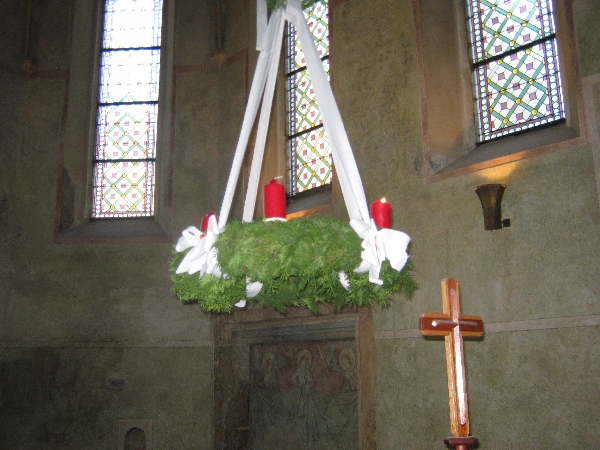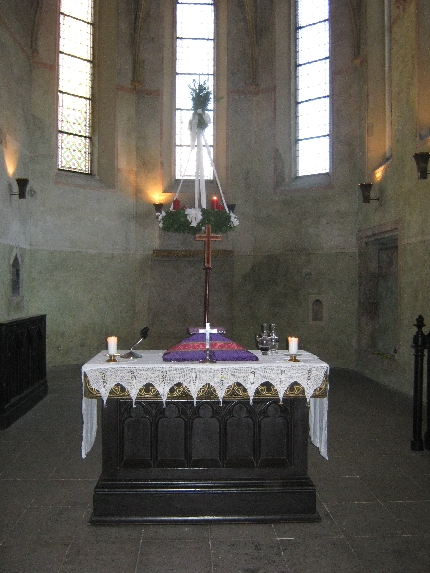
The Feast of Pentecost, (historically known in the UK as ‘Whit Sunday’), marking the coming of the Holy Spirit on the first disciples as described in the second chapter of the Acts of the Apostles, is the third most important festival of the Christian Year. Only Easter and Christmas are seen as being more significant.
Yet in my experience of Christian ministry, most people tend to regard it as being little more than an ordinary Sunday. Therefore this year at St Clement’s, at the helpful suggestion of a few members of the regular congregation, we decided to do a number of different things to try to stress the significance of the festival and make it both memorable and enjoyable at the same time.
Pentecost Sunday is always fifty days after Easter Day and is the last Sunday of the Easter season. Therefore in 2012, it was last Sunday, 27th May. As my Church Book & Desk Diary reminds me, the next day, ‘Ordinary Time resumes’. Thus in previous years on Pentecost Sunday, we have always used our Orders of Service for the Easter Season for the last time, before changing over to the ones we use during Ordinary Time.
However, within Common Worship: Times and Seasons, there is a wealth of liturgical material for an appropriate and different way of celebrating the Eucharist on Pentecost Sunday. So this year, I created a new Order of Service, utilising much of this material, giving it a cover in the correct liturgical colour of the season – red.
Then, taking the theme of the liturgical colour for Pentecost being red, by announcements on the two previous Sundays and by email messages, I encouraged everyone to come to Church on Pentecost Sunday, wearing something red. As can be seen in the accompanying photographs, many people took up the idea with various shades of red being seen across the congregation.


The Order of Service provided for the Biblical reading describing the events of the first day of Pentecost, to take place very near the beginning of our worship, with the reader saying at the end, “The Lord is here” and the congregation responding, “His Spirit is with us”. Then as the reading told of the first disciples speaking in a variety of different languages, various members of the congregation gathered around the lectern to say those self-same words, “The Lord is here. His Spirit is with us” in a whole variety of different languages.
Besides English, we had eleven other languages. For the record they were, Catalan, Telagu, German, Czech, Greek, Russian, Hindi, Spanish, French and Welsh. The eleventh language was unspoken as David, who has a totally deaf half-sister, signed the words instead.
One of the main instigators of these various ideas for our Pentecost Sunday celebration, was my good friend and ministerial colleague, Rev’d Dr Karen Moritz of the Presbyterian Church (USA). Karen works in the ecumenical department of our host denomination, the Evangelical Church of Czech Brethren and worships with our host congregation in Czech and then stays on to worship with us in English. As I explained in an earlier post, Karen is able to be licensed under the ecumenical canons of the Church of England, to do a variety of things with us. Thus it was a great pleasure to have her preach for us on Pentecost Sunday.
The photograph at the beginning of this post shows us both wearing our respective red stoles each with ‘tongues of flame’ symbolising the Holy Spirit. However, it has also been suggested that this picture gives new meaning to the concept of ‘the white sheep and the black sheep’ 🙂
Y mae’r Arglwydd yma.

Y mae ei Ysbryd gyda ni








